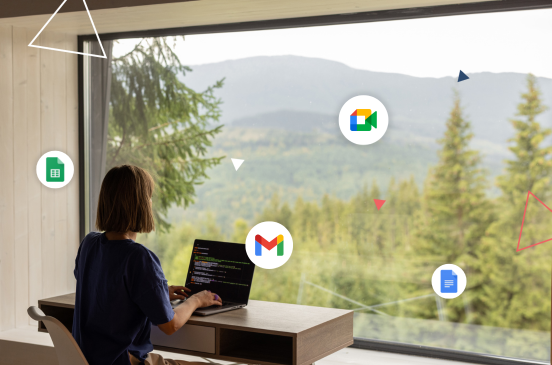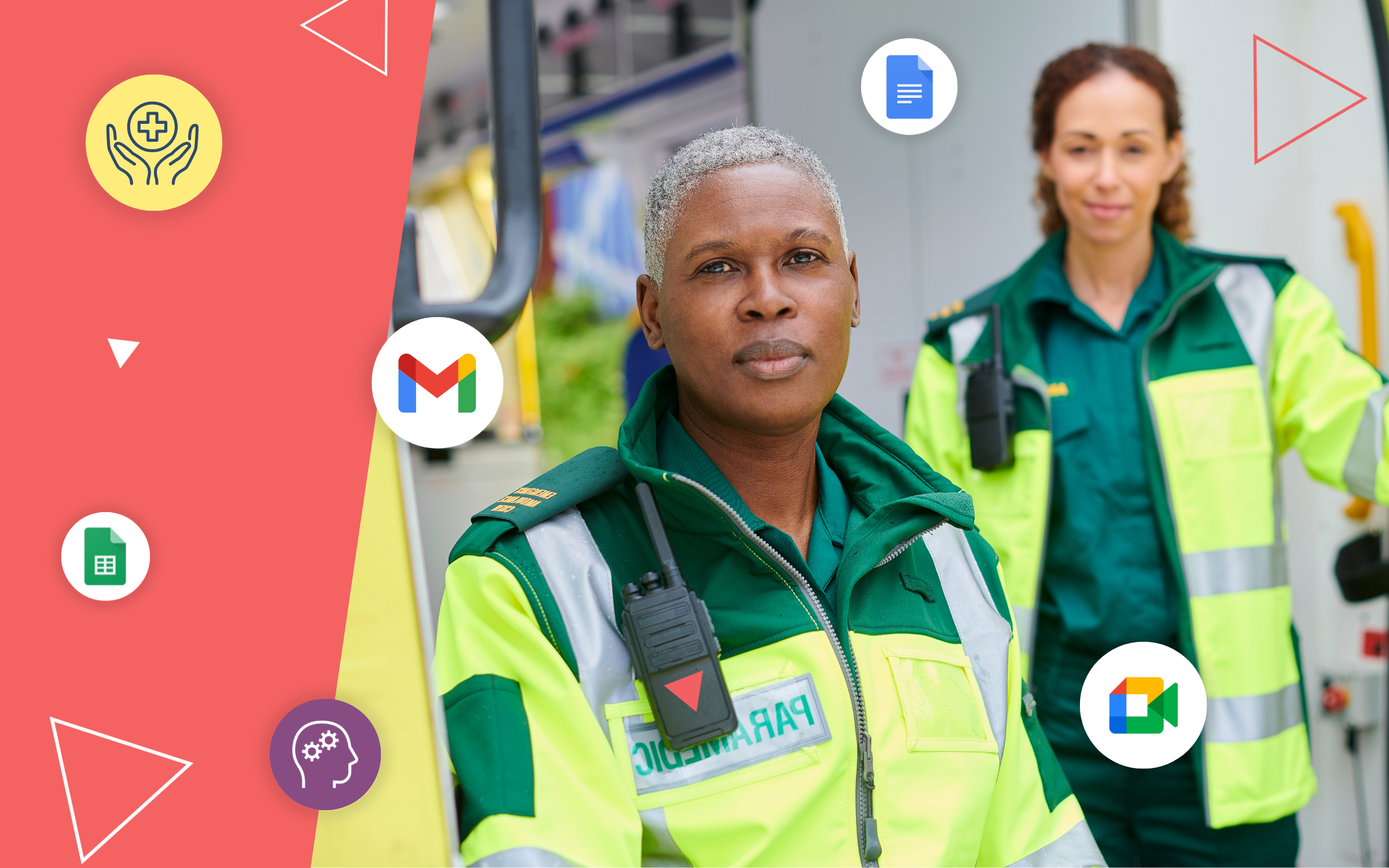While the digital workplace has existed for a while, it entered a new phase in the post-pandemic era of remote working.
Organizations implementing the modern digital workplace are uncertain about supporting the needs of hybrid workers. For employee satisfaction, business leaders must drive the complete optimization of the modern digital workplace. Technology-driven innovations like the cloud platform continue to redefine the way we work. With the change in the workplace landscape, companies that are not embracing this inevitability are growing obsolete. In this blog, we’ll look at why and how organizations can optimize their digital workplace.
Michael Woodbridge of Gartner talks about the next phase of the digital workplace where “employees want to enjoy their work more, get it done faster and, at the same time, find new ways to improve the quality of their work.” Collaboration is a key element of any closely-knit team within an organization. Teams can hardly achieve anything productive without continuous collaboration. This brings us to the question – how do they collaborate in the digital workplace?
Collaboration tools can streamline the flow of ideas and information. Not so many years ago, you could share a document or image only as an email attachment. Now, you could simply be viewing a Google document or file – and decide to “share” it without any additional tool. With modern tools, you not only have access to the necessary information – but can also perform all the actions associated with that information.
What is an optimized digital workplace?
Gartner defines the digital workplace as the platform that “enables new, more effective ways of working, raises employee engagement and agility, and exploits consumer-oriented styles and technologies.” An optimized digital workplace is an agile working environment that simplifies work-related processes and leverages technology tools that are easy to learn.
An optimized digital platform uses a single platform with all the necessary tools and applications that employees need to perform all their work. No longer do they need to switch between multiple apps to complete their work. Additionally, a digital workplace provides an ecosystem of collaboration tools for employees working remotely, in the office, or hybrid.
The digitalization of the modern workplace using technology has enabled the following:
- Seamless communication and collaboration among employees based at different locations.
- Increased workplace efficiency and productivity are driven by digital technologies.
- Digital transformation and innovation across the organization.
The interconnected modern workplace
With the emergence of the “work from anywhere” model, the focus has shifted towards the employee or remote worker. They have the tools and technology to stay connected through smartphones, tablets, and other devices. Besides collaborating with their peers, they can now stay on top of any digital trend.
Cognitive technologies like Artificial Intelligence (AI) are creating new data-centric jobs and opportunities. With these technologies, organizations can now tap into varied datasets that were unheard of some years back. Now, employers must rethink how to integrate both smart machines and intelligent human workers in their digital workplace.
An optimized digital workplace is not possible without connecting the workforce with the information they need to utilize for their work. For example, consider the case of Google Workspace, which enables employees to do their work in one place including:
- Sending and receiving emails
- Schedule online meetings using calendar or email invitations
- Start a video conference from chat or even inside a document
- Share a variety of Google files including documents, spreadsheets, and slides.
Challenges with Digital Workplace Optimizations
For organizations implementing the modern digital workplace, here are some common challenges they face:
- Enabling digital collaboration
- Improving work efficiency
- Filling knowledge gaps
- Integrating the “siloed” workplace.
Besides these challenges, an average digital workplace has a host of fundamental problems such as:
- Use of multiple independent tools to implement the digital workplace.
- Lack of employee engagement negatively impacts the digital-first culture in any organization.
- Plenty of workplace “distractions” in the form of multiple applications – along with an overload of business emails, notifications, and messages.
- Complicated work processes where employees spend a lot of time and effort to complete their assigned work.
Best practices to optimize the digital workplace
We’ve gathered five best practices that organizations can implement to address these challenges and optimize their digital workplace:
- Build an efficient collaboration framework
With the right set of cloud-powered collaboration tools and frameworks, organizations can easily build an efficient collaboration platform for their hybrid workforce. Besides effective team collaboration, cloud communication tools can also improve workforce productivity.
As more employees share ideas and collaborate on work, organizations need functional standard operating procedures (SOPs) to optimize their workflow and meet their business needs. - Implement flexibility
According to Gartner research, organizations that offer a flexible work environment rank 55% of their employees as the best performers. Comparatively, the percentage is only 36% for employers that do not provide a flexible work environment.
Technology tools and platforms play a significant role in enabling workplace flexibility. This includes cloud-powered tools used for online meetings, collaboration, and calendars. For the best outcome, every employee must have equal access to critical services. - Create practical workplace policies
Organizations need practical workplace policies to streamline their digital workflow. For example, guidelines for online meetings, data security, and communication tools. Using workplace policies, enterprises can regulate their digital workplace and eliminate any guesswork among employees.
Clear and consistent workplace policies also boost employee engagement and productivity. At the same time, organizations must maintain the line between employee policies and empowerment for better creativity. - Democratize technology
As Michael Woodbridge puts it, organizations must “democratize technology to create a smarter workplace.” This means that every organization must be aware of the evolving nature of workplace-related technologies and tools. To transform the way work is done, they must focus on technology tools like AI, automation, and business analytics.
Organizations can democratize or improve the digital dexterity of all their employees with skilled professionals who can:
Use and leverage data in any business situation.
Automate business processes using low-code or no-code technologies.
Demystify AI technology for wider use in the workplace. - Integrate the “siloed” workplace
Organizational silos (or siloed teams) are the bane of any modern digital workplace. With siloed teams, most ideas and conversations tend to remain confined within the team, thus preventing any idea-sharing and collaboration. The “virtual” digital workplace compounds this problem with its distributed workforce spread across offices.
To integrate the siloed workplace, organizations can implement agile-related work methodologies that can create a flatter organizational hierarchy. Further, using collaboration tools, employees or teams can interact with other teams without any oversight or complex technology.
How Onix is enabling an optimized digital workplace
By transforming the way employees work, Onix has facilitated an optimized digital workplace for its global customers. Using cloud-powered collaboration tools, we have fostered business values like inclusion, accessibility, and productivity.
Here are some reasons why you should choose Onix as your partner for implementing the digital workplace:
- Over 30 years of industry experience working as a premier partner for Google
- Expertise in implementing, training and change management for Google Workspace
- 96% customer satisfaction score
- Over 900 years of cumulative experience in Google Workspace
Here are some of Onix’s capabilities that will keep you ahead in a competitive market:
- Comprehensive customer support
- A dedicated account manager to take care of your workplace needs
- Consolidated billing to simplify your account management
- Professional services to troubleshoot any persistent problem
- End-user training for your employees every quarter
- Hands-on product demo on new features to your entire staff
How can the Onix Digital Workplace solutions transform the way you work? Our professional team works continuously with your employees to embrace the new tools in the digital workplace. At the end of the project, your employees feel more confident and empowered to perform their work efficiently, thus saving both time and money for your organization.
By partnering with Onix, your teams have access to all collaboration tools that they need at a single location. This includes the entire suite of Google Workspace – along with third party security management tools.
Conclusion:
The digital workplace is here to stay – and organizations must look to optimize it for better productivity, collaboration, and employee satisfaction. The key to an optimized digital workplace is the deployment of the right tools and technologies. A technology-based solution provider like Onix can help you in this transformational journey. Here’s how you can build a future-proof digital workplace.
If you want to know more about our digital workplace solutions, feel free to get in touch with us.
Reference links:
- https://www.gartner.com/en/articles/how-to-make-your-digital-workplace-happier-faster-and-smarter
- https://www.lumapps.com/digital-workplace/
- https://pitchavatar.com/optimizing-the-digital-workplace-key-tools-and-practices/
- https://www2.deloitte.com/content/dam/Deloitte/us/Documents/human-capital/us-cons-digital-workplace-and-culture.pdf
- https://kissflow.com/digital-workplace/challenges-in-digital-workplace-management-and-solution/









